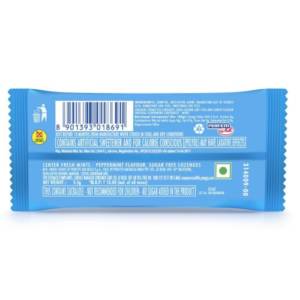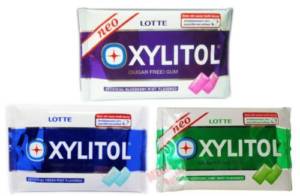Remember the last time when you took your dog out for a walk? If you own a dog, you would know that dogs are easily fascinated by all the stuff scattered around. They love to smell and have a taste of little leaves, chocolates, stale food or even gum. But do you know there is the stuff that can be harmful and life-threatening if it goes inside the belly of your dog?
The human body can digest a lot of food products easily, but the same cannot be said about dogs. Chewing gum and chocolates are two products that can have dire consequences when your dog ingest them. And since dogs are part of your family, you might happen to spit a chewing gum around your home. Now, as a pet owner, you must know that chewing gums can be extremely harmful inside a dog’s body.
If you find out that your dog has eaten a gum, it’s time to act quick. You must call the vet before wasting any further time. While there are chances that all gums won’t be harmful, you should follow the following steps to become doubly sure and prevent any mishap.
What to do if your dog eats gum?
-
Call the Vet
The first step first, you must call the vet as soon as you find out that your dog has eaten gum. As you would realise further in this article, this can be a severe case, and you shouldn’t risk your dog’s life by hoping it would digest. The two significant risks of a dog eating gum are poisoning and intestinal blockage.
-
Check for the ingredients in the gum
Regular chewing gum contains real sugars, and your dog’s body will break it down and digest it. But if you’re on a diet or a person with diabetes, you might be eating sugar-free gums. These gums can be harmful to the dog’s body as many of them contain an “artificial sweetener” named Xylitol. As explained later, it’s an emergency if your dog has eaten a gum containing Xylitol. You immediately need to call the vet as it might start showing its deadly effects very soon.

The good part is that not all sugar-free gums contain Xylitol. Other artificial sweeteners like Sorbitol, Aspartame or Mannitol aren’t harmful so you can breathe a sigh of relief.
Is gum Harmful to the dog if swallowed?
If your dog has swallowed the gum containing Xylitol, it is bound to show its effects since even a small amount of Xylitol is harmful. If your dog has swallowed a regular gum not containing Xylitol, you may relax. But it doesn’t mean it will not affect. Your dog’s body can’t digest the chewing gum. So the gum will have to pass all the way through the digestive system to the rectum and get out. This is a long process and might upset your dog’s digestive system.

You must act swiftly if your dog has eaten many gums. While dogs may excrete a single chewing gum in about 12-24 hours, it would be hard for its body to pass multiple chewing gums. As chewing gums stick easily, they can cause intestinal blockage. This stops the regular digested food to pass through the intestines, causing an emergency in the body. Intestinal blockage can be aggravated when the dog eats the wrapper along with the gum.
You must consult a vet if you come to know that your dog has eaten multiple gums because it might take a few days for your dog to show symptoms of intestinal blockage. Symptoms of an intestinal blockage include constipation, loss in appetite or vomiting. Your dog might need surgery if the gum has caused an intestinal blockage.
You should also notice if the chewing gum is slightly sticking out from your dog’s rectum. Don’t pull it off yourself as it may cause intestinal damage. You should take your dog to the vet in such a case.
What is Xylitol Poisoning?
Xylitol is an artificial sweetener that is safe to consume for humans but can cause Xylitol Poisoning in dogs. This is because of the fact that the human body can easily tell the difference between Xylitol and sugar. It doesn’t make unnecessary insulin because of Xylitol. But the dog’s body cannot differentiate between natural sugar and Xylitol.

It starts trying to break down Xylitol by creating insulin. Since Xylitol isn’t real sugar, it won’t break down. As it starts producing large amounts of insulin, the stored sugars start to break down instead of Xylitol. This stored sugar fuels the body but it unnecessarily starts breaking down due to the insulin. This starts decreasing the blood sugar in your dog.
As blood sugar rapidly starts decreasing, the dog begins suffering from hypoglycemia. If hypoglycemia occurs, your dog would feel several deadly symptoms in quick time.
Xylitol poisoning has increased significantly since the 2000s because of the increase in the use of Xylitol as an artificial sweetener in gums. The negligence and ignorance of dog owners have a huge role to play in these cases.
How much Xylitol causes Poisoning?
The amount of Xylitol that can cause poisoning in your dog depends upon the weight of your dog. Ideally, one Xylitol based chewing gum containing at least 0.5g Xylitol can cause Xylitol poisoning in a dog weighing around 5kg. A regular sugar-free gum can contain variable amounts of Xylitol ranging from 0.2g to 1g.
It’s challenging to figure out exactly how much Xylitol has your dog taken as most companies don’t mention the exact amount. You also can’t gauge accurately even if you know the correct amount. To make the procedure smooth, you must carry the chewing gum’s wrapper to the vet.
Xylitol Poisoning Symptoms?
While Xylitol Poisoning can start showing its symptoms as soon as half an hour after ingestion, it isn’t necessary. It may take a bit longer for your dog to show any kind of symptoms. But you must not ignore the seriousness of this situation. You must go to the vet as soon as you come to know that he has consumed Xylitol. The treatment can work best when you contact the vet early.
The following symptoms are bound to happen if your dog is suffering from Xylitol poisoning. It may take up to 72 hours for your dog to start showing them. You would do better to get him to the vet even before symptoms start showing. The symptoms of xylitol poisoning may include:
Weakness and Unconsciousness– Your dog may begin fainting due to a rapid decrease in blood sugar levels
Bleeding gums or pale gums
Excessive vomiting
Lack of appetite due to increased fuel from breaking blood sugar
Loss of mental coordination and confusion- He may not be able to do regular tasks easily.
Seizures and tremors
Internal Bleeding
Liver Failure
Most of these symptoms are easily identifiable, but the last two. The last two traits are extremely dangerous. If you don’t take proper action on time, it might even kill your dog. Be quick to reach out to the vet before it’s too late.

Xylitol Poisoning may cause liver failure in the cases of dogs consuming excessive amounts of Xylitol. This happens because of the increased pressure on the liver due to excessive production of enzymes. The chances of this are less as it can take excessively large amounts of Xylitol to cause liver failure.
Possible treatments
Xylitol Poisoning is only life-threatening in untreated cases. So you don’t need to lose control and panic even if your dog starts showing symptoms at the vet. Your dog has a high chance of recovering with proper treatment. Here are the possible treatment procedures to save your dog.
-
Inducing vomit
Your vet may suggest a little self-diagnosis if your dog has swallowed sugar-free gum around half an hour ago. He would tell you to induce vomiting from your dog as soon as possible to reduce further absorption of Xylitol. You may use 3% Hydrogen Peroxide to ease the process of vomiting.
If you aren’t comfortable in inducing vomit from your dog, it’s advised to rush him quickly to the vet who will use other methods like gastric lavage. You should also try feeding your dog every two hours to maintain sugar levels. Try to feed him liquids if he doesn’t eat himself.
-
Stabilising Blood Sugar Levels
The doctor may start monitoring blood sugar levels instantly if the case is serious, and the situation had already worsened when you reached the vet. He may use other techniques to bring out the intoxicant xylitol from the dog’s body.
-
Liver medication
Since Xylitol damages the liver, the doctor might start monitoring liver values in severe cases. You would have to admit him to the hospital as the effects of xylitol show up on the liver only after 48 hours. He would start monitoring his liver and give appropriate medication as needed.

-
Injection of dextrose
Xylitol may also affect blood glucose levels depreciating them. The doctor would monitor your dog’s blood glucose levels and give him doses of dextrose to balance glucose levels. The vet would admit your dog to monitor the blood glucose levels for at least 12 hours and balance them quickly.
What if my dog ate gum that’s already been chewed?
An already chewed chewing gum might work in your dog’s favour. If he has eaten the gum you spat out an hour ago; there are chances that the xylitol content has already been washed away with saliva. Xylitol can be harmful even in small amounts. A small amount of Xylitol may still be left in the gum, so you can’t take it lightly.
The good part is that the lesser Xylitol he consumes, the better. If your dog weighs more than 5kg and he swallows an already chewed chewing gum, there are chances he may not be affected by it. But to be doubly sure, you should at least consult your vet.
Prevention
Keep away these popular products containing Xylitol
There are a host of daily use products other than chewing gum that contain Xylitol. As now you know how dangerous it can be for your dog, you must keep all these products out of the dog’s reach. The xylitol-containing products may not display the presence of Xylitol in their ingredients description. To be on the safer side, assume that all artificially sweetened products contain Xylitol. These products include:
- Toothpaste, even some toothpaste for dogs contain Xylitol so you should read the label before buying.
- Peanut Butter
- Sugar-free candies.
- Fruit drinks
- Jellies, honey and jam
- Peppermint
- Protein bars and powder
- Chocolate
- Mouthwash
- Supplements, vitamins and medicines
- Body, face and hair products

Try not to let children throw candies and chocolates around your dog. Also, don’t let them feed your dog any of these products. You must take care of reducing the usage of any of these products that contain Xylitol.
Store sugar-free gums far away from dogs
Don’t keep chewing gums and candies in the reach of your dog. Dogs are innocent and curious animals, and you can’t teach them what to eat and what not to eat.
Switch to chewing gum brands that don’t contain Xylitol
All sugar-free gums don’t contain Xylitol. So do a little research and check out the ingredients of the options available in the market. The trip to the vet is extremely expensive and emotionally draining. It’s easy to take the necessary precautions than reacting to mistakes. It takes a little awareness to choose the right products and keep your dog away from Xylitol.
Leave the habit of spitting out at home
Don’t spit the gum in your home. Go out in the balcony and spit it away from the reach of your dog. Do everything necessary to keep anything containing Xylitol out of your home.
Source –
https://www.vettedpetcare.com/vetted-blog/first-2-hours-my-dog-ate-gum/
